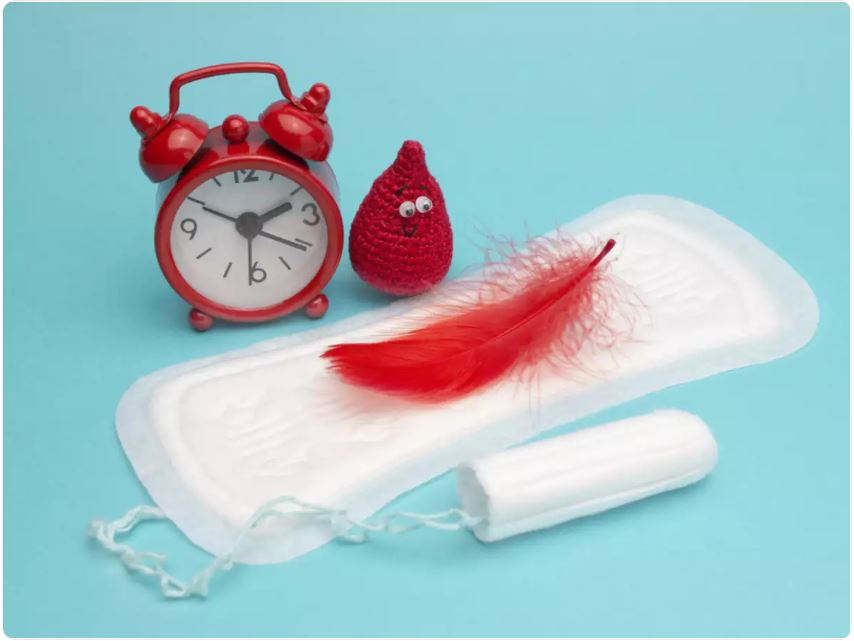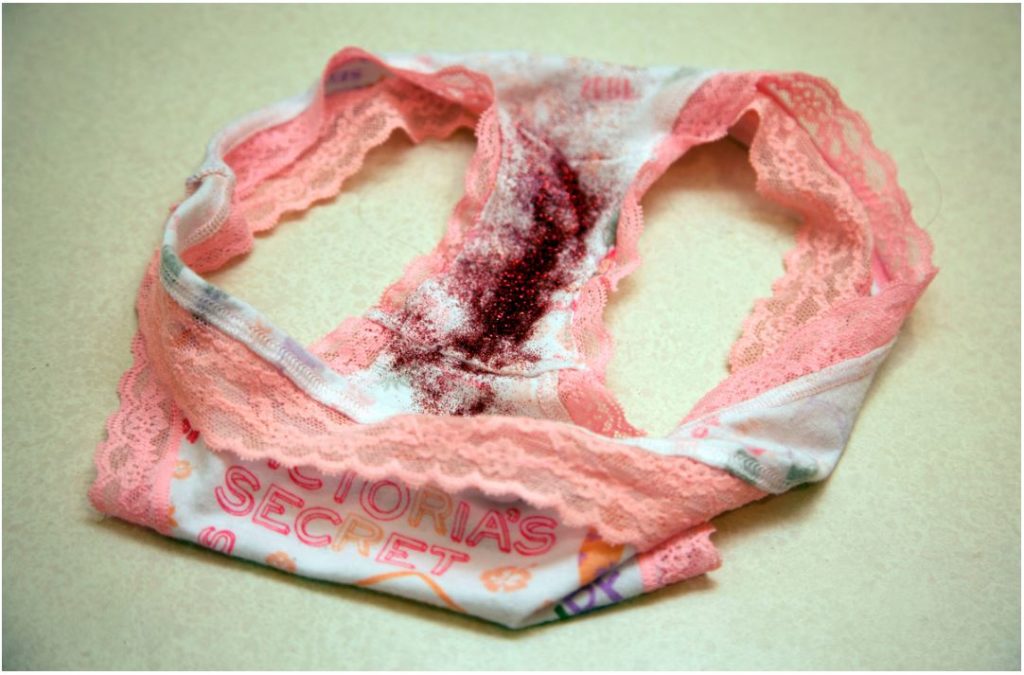Part 1 – Getting a Sense of Scale
Regarding the title of this series: you can believe that I was pretty upset while I crunched these numbers. This series follows upon my Zero-Waste Lent experience from last year, during which I tried not to generate any landfill waste, even while on my period. The post about low-waste / zero-waste menstrual products was one of the first posts on this blog[1] and to date is still one of the most viewed. Because of its popularity, I have intended for almost a year now to dive into some more detailed numbers around just how much waste is created by menstrual products in the United States.
I will now reiterate the warning at the beginning of last year’s post: abandon all squeamishness, ye who enter here. The reason why we have such a high level of shame around this healthy, natural function is a big reason why we have created an industry around high-plastic content, single-use menstrual products. Reusable menstrual products involve touching blood and touching yourself, and many women still find that – find our own bodies – gross. Removing shame from the equation will not only help our own mental health, but it will help the environment as well.
So let’s start with some numbers about periods. Understandably, these numbers will be highly estimated, but they are all grounded in the limited data I was able to find.
Menstruation Statistics
According to an article from Huffington Post, the average woman “has her period from three to seven days and menstruates from age 13 until age 51. That means the average woman endures some 456 total periods over 38 years, or roughly 2,280 days with her period — 6.25 years of her life.”[2]

Image credit: [3]
2017 numbers from the US Census[4] list the total female population of the US at 163 million, just under 51% of the total population. Based on the age brackets provided by the census, we know that there are 172 million people in the US aged 15 to 54 years, 87 million of whom are women (or people with a uterus – the census does not take gender identity into account, so my apologies, but because of that, these numbers won’t either). Also, unfortunately for us, the census age brackets don’t line up exactly with the 13-51 age group, but it gives us a number close enough to estimate.
The CDC lists the number of US births in 2017 at 3.9 million, the lowest rate in 30 years.[5] Here’s where the math gets a little fuzzy because there is even less information on miscarriages, breastfeeding, and amenorrhea (the absence of menstruation). (By the way, I only recently learned that breastfeeding women don’t menstruate.)[6] Because it makes the math really easy, and I don’t have any detailed statistics, I’m just assuming 12 months no menstruation for every birth. That means we can subtract the number of live births from the number of women in the average menstruation age bracket. That number, by the way, would be 70 million. Removing from that set another 2 million women who experienced pregnancies that did not go to term (based on 2010 numbers),[7] that would leave us with 68 million US women who are currently experiencing a menstruation cycle. More than one out of every five people in our country needs to make monthly decisions about what products to use, and those products add up.
Whatever products you choose use, whatever decisions you make, anything you do will have an impact on the environment in one way or another. I completely understand that there are many factors at play, and every woman is different. Some may not have the financial ability to handle the upfront cost of reusables, and some have physical limitations that prevent them from using certain products. What I am going to do below is give a breakdown of the volume of waste generated by main types of products, both single-use and their reusable equivalents. I am not telling anyone what to use, but simply providing information that will hopefully be helpful.

This photo is Copyright © 2017 hannahaltmanphoto. All rights reserved. Image credit: [8]
Usage Statistics
Once again, I observed the limits of my social awareness bubble when I learned that tampons are still not the most commonly-used menstrual product in the US. I grew up using them, and I assumed everyone else did too. Pads still take the top spot for a variety of reasons, mostly related to concerns around tampons, such as Toxic Shock Syndrome, an intimidation factor for someone who doesn’t know how to use them, or that in some cultures there is an actual stigma around using them. A 2015 survey states that approximately 55% of white women, 31% of black women, and 22% of Hispanic women report using tampons.[9]
In doing a waste analysis of tampon and pad use, I have had to make some sweeping generalizations, some of which are based on cursory research, and some of which are loosely based on my own or others’ personal experience. In fact, I had to phone a friend (who wishes to remain anonymous – thank you, if you’re reading this) to get dimensional measurements of single-use pads and panty liners.
For the sake of ease related to these calculations, we’re going to assume only one type of product used over a woman’s lifetime, even though many women use multiple kinds. Also, since many pads and tampons are advertised as holding about the same amount of blood, we are going to assume the same usage numbers for both (i.e. if someone uses 20 tampons/month, the corresponding number of pads used would be 20).
Now regarding those numbers, estimates on product use vary wildly, depending on the source. All the ones I found assume 13 periods a year and 35-40 years of menstruation, but the number of tampons per period ranges from 7 to 20, depending on the source.
Here are some examples of the range of estimates you can find:

According to tampon instructions, you’re supposed to use the lightest absorbency you need and change them out every 4 to 8 (average 6) hours. I will be the first to admit that I don’t follow those instructions – I don’t have time for that. Assuming a period of 5 days and 4 tampons a day, that’s 20 tampons a month. I don’t think I’ve ever used more than 10.
20 tampons a cycle for 13 cycles a year over 35 years brings us to 9,100 tampons over a woman’s lifetime. (I have no idea where National Geographic got that 15,000 number.) According to that same National Geographic article, US consumers bought 5.8 Billion tampons in 2018. That number factored into my estimates above would lead me to believe that the average in reality is close to 16 tampons a cycle, which is a nice middle-ground between the probably unrealistic suggestion of 20 and my probably unhealthy experience of 10. At 16 per cycle, we wind up with 7280 over a lifetime.
Next time we will take a pass at figuring out just what waste on that scale even looks like.
Thanks for reading!
[1] https://radicalmoderate.online/zero-waste-lent-week-2-periods/
[2] https://www.huffpost.com/entry/period-cost-lifetime_n_7258780
[3] https://timesofindia.indiatimes.com/life-style/health-fitness/health-news/women-who-spend-more-time-together-end-up-having-periods-at-the-same-time-myth-or-fact/photostory/71292326.cms
[4] https://factfinder.census.gov/faces/tableservices/jsf/pages/productview.xhtml?pid=ACS_17_5YR_DP05&src=pt
[5] https://www.cdc.gov/nchs/data/vsrr/report004.pdf
[6] https://www.llli.org/breastfeeding-info/menstruation/
[7] https://www.statista.com/topics/1850/pregnancy/
[8] https://www.hannahaltmanphoto.com/andeverythingnice#7
[9] http://www.center4research.org/tampon-safety/
[10] https://www.cemcor.ca/resources/topics/heavy-flow
[11] https://www.cemcor.ca/resources/very-heavy-menstrual-flow
[12] https://www.huffpost.com/entry/period-cost-lifetime_n_7258780
[13] https://reusablemenstrualcup.com/menstrual-cup-faqs/how-many-tampons-lifetime/
[14] https://www.nationalgeographic.com/environment/2019/09/how-tampons-pads-became-unsustainable-story-of-plastic/
1 Comment
Jean · February 16, 2020 at 1:51 pm
I love that you are bringing this to light and the stats are interesting. This is normal female bodily functioning, not some secret taboo topic. I was guilty of keeping it in secrecy but am all for bringing it to normal discussions between women and men. Thank you Alison😘